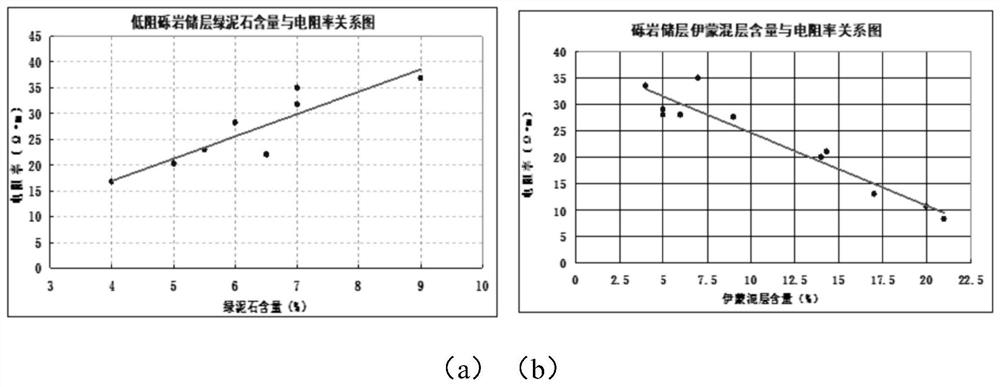Method for identifying conglomerate oil layer through resistance reduction rate based on clay type
A technology of reduction rate and resistivity, applied in earthwork drilling, special data processing applications, wellbore/well components, etc., can solve problems such as inaccurate fluid properties, achieve the effect of overcoming limitations and accurate identification results
- Summary
- Abstract
- Description
- Claims
- Application Information
AI Technical Summary
Problems solved by technology
Method used
Image
Examples
Embodiment
[0048] Taking the conglomerate oil testing section of 25 wells in the Karamay area as an example, the method for identifying the conglomerate oil layer based on the resistance reduction rate of the clay type of the present invention is used to identify the oil layer. The implementation steps are as follows:
[0049] The first step is to judge the clay type in the reservoir according to the logging characteristic values of chlorite and illite mixed layers;
[0050] Obtain resistivity and density values for conglomerate reservoirs and resistivities for adjacent shale formations;
[0051] The second step is to calculate the resistance reduction rate according to the formula C=RT / Rtclay;
[0052] The third step is to draw the resistance reduction rate-density oil layer identification chart, determine the oil layer standard, and judge the fluid properties of the reservoir.
[0053]The data and calculation results in the embodiment are shown in Table 1. It can be seen from Tabl...
PUM
 Login to View More
Login to View More Abstract
Description
Claims
Application Information
 Login to View More
Login to View More - R&D
- Intellectual Property
- Life Sciences
- Materials
- Tech Scout
- Unparalleled Data Quality
- Higher Quality Content
- 60% Fewer Hallucinations
Browse by: Latest US Patents, China's latest patents, Technical Efficacy Thesaurus, Application Domain, Technology Topic, Popular Technical Reports.
© 2025 PatSnap. All rights reserved.Legal|Privacy policy|Modern Slavery Act Transparency Statement|Sitemap|About US| Contact US: help@patsnap.com



